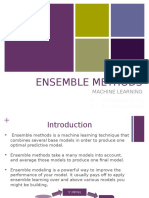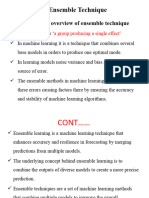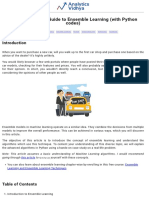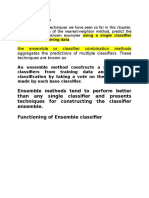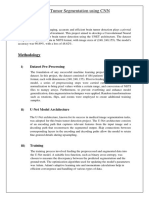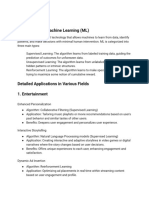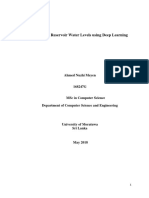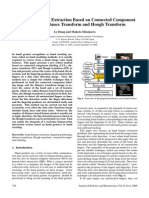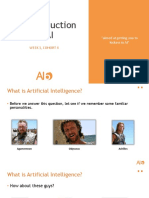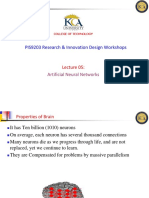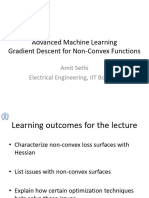0% found this document useful (0 votes)
5 views14 pagesEnsemble Methods Advanced ML
Ensemble methods enhance predictive performance by combining multiple learning algorithms, effectively reducing variance and bias while improving generalization. Key categories include bagging, boosting, stacking, and voting, each with specific advantages and applications in fields like finance and healthcare. Despite challenges such as increased computational cost and reduced interpretability, ensemble methods remain vital in advanced machine learning, with future trends leaning towards hybrid and automated systems.
Uploaded by
jetraydurgeshsharmaCopyright
© © All Rights Reserved
We take content rights seriously. If you suspect this is your content, claim it here.
Available Formats
Download as PPTX, PDF, TXT or read online on Scribd
0% found this document useful (0 votes)
5 views14 pagesEnsemble Methods Advanced ML
Ensemble methods enhance predictive performance by combining multiple learning algorithms, effectively reducing variance and bias while improving generalization. Key categories include bagging, boosting, stacking, and voting, each with specific advantages and applications in fields like finance and healthcare. Despite challenges such as increased computational cost and reduced interpretability, ensemble methods remain vital in advanced machine learning, with future trends leaning towards hybrid and automated systems.
Uploaded by
jetraydurgeshsharmaCopyright
© © All Rights Reserved
We take content rights seriously. If you suspect this is your content, claim it here.
Available Formats
Download as PPTX, PDF, TXT or read online on Scribd
/ 14

